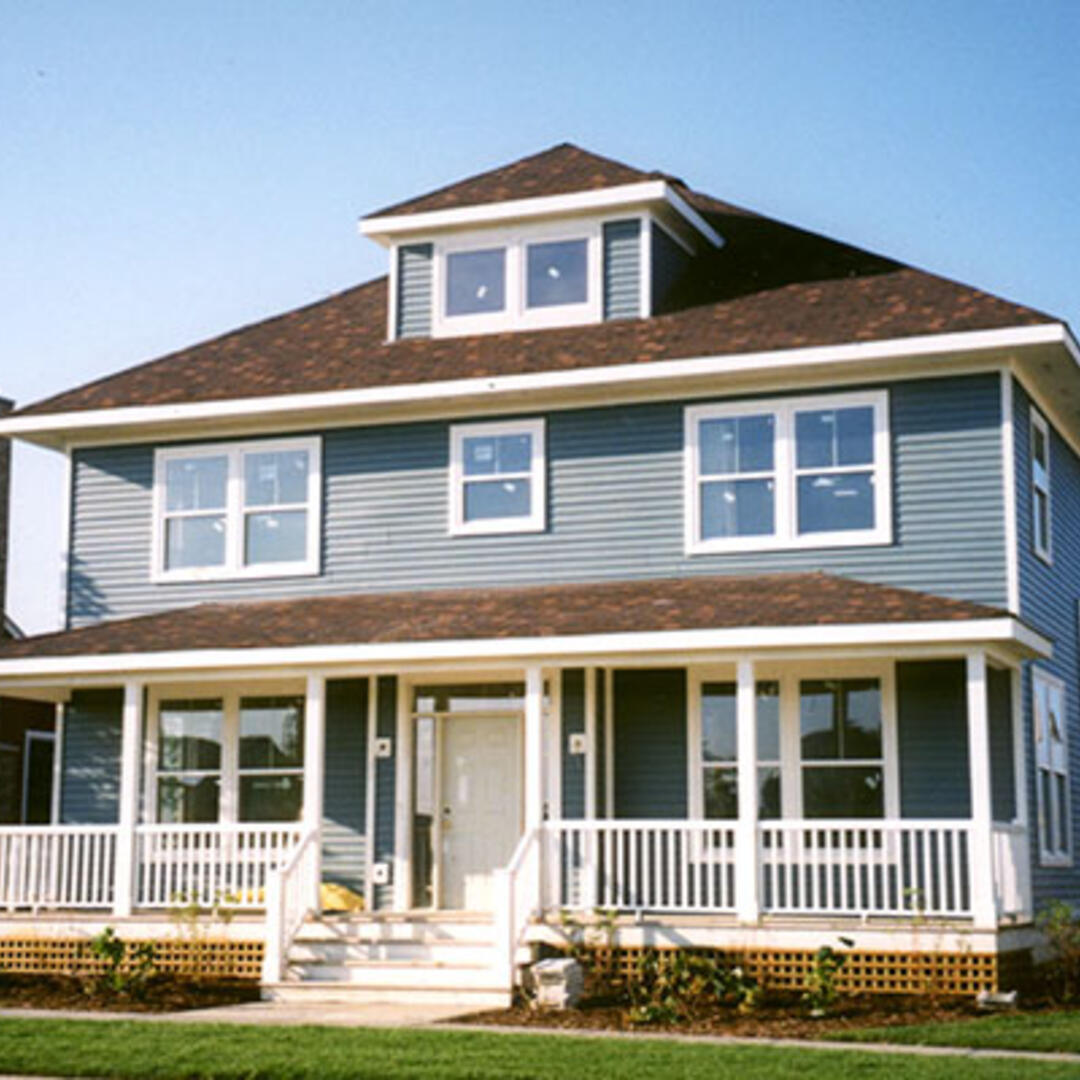Take a look at the Prairie Crossing homes—they are "Heartland" homes that anyone would love to live in, reassuringly traditional. Who would think that they also happen to be among the most sophisticated and finely tuned high performance homes in their region?
Project Team: Building Science Corporation, Sturbridge Construction
Address: Grayslake, IL
Description: Average 2,700 ft2, three bedroom, 21/2 bath single family homes
In 1996, Prairie Crossing became the first community-scale Building America project in the country. Building America is a key element in this conservation community's approach to the environment. Builder Dave Richmond of Sturbridge Construction describes how Prairie Crossing became a Building America project: "I had just come from Bigelow Homes to work with Sturbridge on this new project, Prairie Crossing. We knew a lot about energy efficiency, but there were questions about a systems approach involving indoor air quality and efficient use of materials. Joe [Lstiburek] stepped right in with us and our trade contractors and sold us with Building America science."
Lstiburek not only sold the builder on Building America standards, he sold the local building department. Lstiburek wrote an all-or-nothing optional code for Lake County that permits energy-efficient deviations from the standard local code IF the project embraces ALL of the Building America criteria in the optional code (for more information on this code see Environmental Building News at www.buildinggreen.com/news/opt_code.html). "We use single top plates, metal band cross bracing [eliminating OSB or plywood shear panels and making room for rigid insulation], and Romex with air tight electrical boxes. Each of these is not permitted under the standard local code," says Richmond.
The advantages to this Building America builder don't end there. Efficient framing and other changes save Sturbridge about a dumpster and a half per house. "That's about $600 back in our pocket," says Richmond. Richmond negotiated another $250 per house back from the drywall contractor. "I discovered that at the 11-month warranty walk-through on our homes, we were dealing with almost none of the typical nail pops," says Richmond. "I asked the drywaller for the cushion he had built in for nail pops in exchange for a T&M arrangement —we both thought it made sense." (If you have never read about the relationship between efficient framing and reduced drywall callbacks, you should — see Drywall, Wood and Truss Uplift.)
Richmond states that he used the Builder's Guide to Cold Climates quite a bit at the beginning of construction with his super and subs, but quite a bit less as all the crews got the hang of the systems approach to Building America. "Unfortunately, I have had quite a few opportunities to use the Guide with mechanical contractors—we are currently on our 4th MC," laments Richmond. But the current MC works with more than one Building America builder in the area, so Richmond is hopeful: "The MC has always been the most difficult to bring on board with change."
The most significant changes for Sturbridge from 3 Building America prototypes to current construction practice have been the increased air sealing details and the controlled mechanical ventilation provided by the Air Cycler™. Richmond would like to be using the simpler and less costly central return in their ducting system, but the local market dictates individual returns. Richmond is using an alternative basement insulation and is open to research on basement insulation options. Richmond describes the marketing of Building America changes and advantages to buyers as pretty straightforward: “Our buyers come pretty savvy and interested in technical performance—it’s the nature of buyers attracted to the bigger picture Prairie Crossing offers.” Richmond speculates that recent world events will help buyers make the connection between energy efficiency and national energy independence.
Stan Rosenberg, a Prairie Crossing homeowner for three and a half years, has this to say about his home. “From the outside, it looks like a traditional farm house but when you get into the nuts and bolts of how it works, it’s great to have the energy efficiency and environmentally friendly performance,” says Rosenberg.
See the Prairie Crossing Energy Analysis for more information about energy savings.


